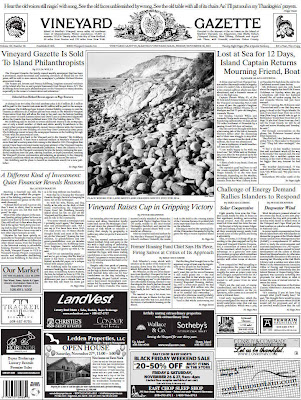Digitization of technology and the Internet were the reason, but it was still a shock to think back about the Kodachrome bricks I bought at B&H Photo at its old West 17th Street location, the rolls stored in the fridge, and then shipped in pre-paid mailers for processing. The strongest memories were about the days the familiar yellow box of developed slides arrived in the mail, sorted into carousel trays, and then viewed with such anticipation and delight through the Leitz projector on the fold-up Da-Lite screen kept under the living room couch.
Stacked rows of ordered carousels are still in a downstairs closet next to the projector, but it's a rare day we set up the projector table, raise the screen, dim the lights . . . and talk. Pictures are now digital, instantaneous, and online. They still have great power to capture life and create memories, but the experience is different. The drama and storytelling of the family slide show is gone. I learned a lot about the world over many after-dinner slide shows with my grandfather who narrated his travels with my grandmother in the 60s and 70s. It's where I first went wide-eyed with wonder about far-away places like the pyramids in Giza, Loch Ness, Easter Island, and Ankor Wat in Cambodia.
Yesterday's New York Times ran a wistful story about Dwayne's Photo in Kansas, the processor who developed the last rolls of Kodachrome. The byline is from A.G. Sulzberger, the son of the paper's publisher, who began writing for the Times last year. I think he misses Kodachrome too.
"An unlikely pilgrimage is under way to Dwayne’s Photo, a small family business that has through luck and persistence become the last processor in the world of Kodachrome, the first successful color film and still the most beloved.Postscript –– I worked on the Canon account in the 80s and 90s and helped launch the company's first digital cameras. It was and is about innovation.
"That celebrated 75-year run from mainstream to niche photography is scheduled to come to an end on Thursday when the last processing machine is shut down here to be sold for scrap.
"In the last weeks, dozens of visitors and thousands of overnight packages have raced here, transforming this small prairie-bound city not far from the Oklahoma border for a brief time into a center of nostalgia for the days when photographs appeared not in the sterile frame of a computer screen or in a pack of flimsy prints from the local drugstore but in the warm glow of a projector pulling an image from a carousel of vivid slides."
"At the peak, there were about 25 labs worldwide that processed Kodachrome, but the last Kodak-run facility in the United States closed several years ago, then the one in Japan and then the one in Switzerland. Since then, all that was left has been Dwayne’s Photo. Last year, Kodak stopped producing the chemicals needed to develop the film, providing the business with enough to continue processing through the end of 2010. And last week, right on schedule, the lab opened up the last canister of blue dye.
"Kodak declined to comment for this article."



















































